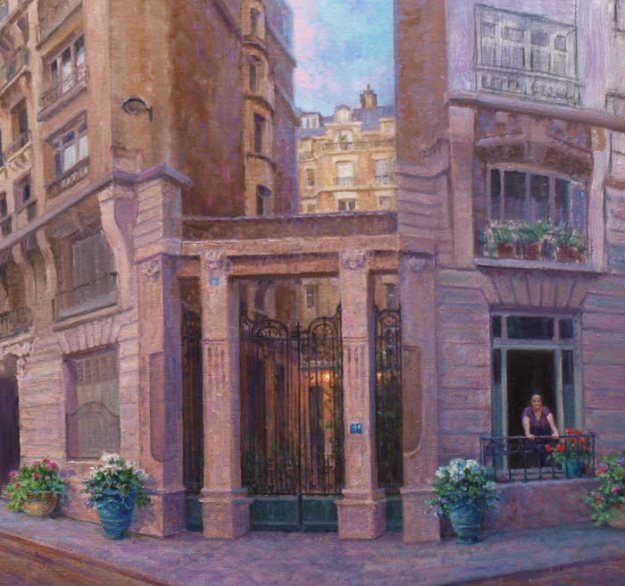My first painting for the new year of 2017 is under my William Hagerman signature. It was a commissioned painting and I thought you might like to see how it was brought to fruition in another…
Landscape oil painting demo: water reflections

Delightful Reflections 27×21 oil painting by William Hagerman copyright 2017
Inspiration for this Texas Hill Country painting came from a texted photo sent by a client of a spot on their ranch. Along with the request of a vertical format, key elements for the painting included the beautiful water reflections and tree up against the sky.


Composition Sketch
Using that criteria, and a marker pen, a rough composition sketch was made.
However, a problem existed requiring adjustments caused by reflections on the right side extending to the bottom edge which created a long unbroken vertical line. The solution was adjusting the design to include more blue sky reflection.
Remember, the goal is not to copy a photo but capture the essence of a scene and make a good painting.
The Painting Begins
With the composition sketch and photo as a guide, a sketch was made on canvas using thinned ultramarine blue and a small bristle flat brush. Additionally, a photo program was used to lighten and crop the photo. Having a computer monitor next to my easel made it convenient to zoom in on areas to see further details.
Work started from the center out, with the shadowed dark area painted first. Other values adjacent to it can then be compared and painted in.

Progression of blocking in color and values continues, similar to placing pieces of a puzzle together. Ultimately the upper half of the painting will be completed before painting the water.

Stay tuned for the next session as more work is done in finishing the block in stage.
Landscape Oil Painting Demo Water Reflections Part Two
Continuing with the block in stage, work is focused in the middle section having worked from the middle out. Now the left side is blocked in.

Additional details are also added to other vegetation that has previously been blocked in, further refining the shapes. After this the right hand side is given some focus adding more details to the trees.

Now the sky is blocked in painting around the larger limbs of the tree up against the sky. Some might ask why not paint all the sky first and then paint the tree? It’s a rule called painting fat over lean. Colors that have more oil content or that are slower drying should not be over painted with faster drying colors as cracking could result. The under layer should be “lean” in that there is less oil or medium added while upper layers are “fat” having more oil or medium which makes the top layer more flexible.
The distant hill is also refined. By the way I do not paint while the frame is on the painting. However, I like to see how the painting looks in it’s frame even at an early stage.

After the sky color is dry, I next add some faint clouds. Since white is more oily, plus I had medium in it, this top layer is more flexible than what’s under neath so I’m following the fat over lean rule.

Now comes the task of painting in the limbs and scattering of leaves on the silhouetted tree against the sky. A photograph would show this tree as black, however it’s not void of light so do not paint it as a black silhouette. Your eye would be able to see into this darker area. A camera can’t do that.

After the previous stage was dry I go back and add additional clouds and do some modifications in the silhouetted tree. The tree wasn’t happy or at least I wasn’t happy with it. Details are now painted in the grassy area on the banks of the stream and essentially the upper half is brought to a completion. Next will come the reflections.

Before showing you the final stages I thought you would like to see a few up close views to get a better look at the details.



Painting Water Reflections the Final Stage
With the upper section complete a basic full color oil sketch is made of the reflections, being careful to take notice of their positioning. I also consult my reference photo. In painting reflections the brush strokes are vertical and edges kept soft.

After this layer dried, details are added in the water with most of the paint strokes being vertical. Horizontal strokes represent ripples in the water.

Final details are added again after the above session has dried. Such as indicating cloud reflections but these are kept to a minimum so as not to call attention thus keeping them subordinate. To facilitate working back into a dried area, I coat that section with a thin layer of medium. Doing so allows for better color matching and it makes blending easier.
After this I sign the painting using thinned paint and a small liner brush with a good point.

Delightful Reflections 27×21 copyright 2017 by William Hagerman
Hope you enjoyed this Landscape Oil Painting Demo: Water Reflections!


























































